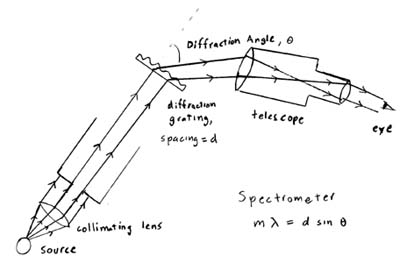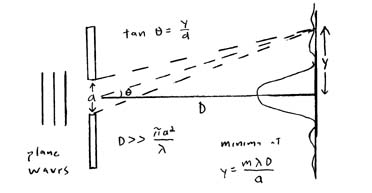
Joseph Von Fraunhofer
By Colan Kennelly
Introduction
Joseph von Fraunhofer seemed destined to have an impact on the world of optics. Born to a family of glassmakers, adopted by the court mirror maker and decorative glass cutter of Munich and finally apprenticed to an optician, Fraunhofer was surrounded by optics from the time he was born. By the time he was 19 years old, Fraunhofer was making the best achromatic lenses yet produced. Fraunhofer attempted to bridge the gap between artisans and experimental natural philosophers, but his attempts were thwarted by his own secrecy. However, his lasting mark in the world was not his achromatic lenses but his discovery of absorption lines in the solar spectrum and in his experiments with diffraction.
Biography
Joseph von Fraunhofer was born March 6, 1787 in Straubing, Bavaria. His father and grandfather were both master artisans of glassmaking. His mother’s side of the family contained a line of glassmakers dating back to the early seventeenth century [4]. As soon as Fraunhofer was old enough, he began his apprenticeship as an optical craftsman [6]. However, this life did not last long.
At age ten, Joseph’s mother died. Then, only a year later, his father died [4]. Fraunhofer, now an orphan, left his hometown in 1799 to move in with Philipp Anton Weichselberger, court mirror maker and decorative glass cutter, to be his apprentice [4]. On July 21, 1801, his master’s house collapsed; fortunately, Fraunhofer and Weichselberger both survived [4,5]. Prince Elector Maximilian Joseph IV surveyed the scene of the accident and was so moved by Fraunhofer’s plight that he gave him another chance in life [4].
Maximilian invited Joseph to his castle in Nymphenburg, and assigned Joseph von Utzschneider to oversee the welfare of Fraunhofer. Fraunhofer continued his apprenticeship with Weichselberger, and also worked with Joseph Niggl, a Benedictine-trained optician[4,5]. In 1804, Fraunhofer became a decorative glass making and cutting journeyman. However, he found this work to be boring and started resenting Weichselberger for his harsh behavior. Weichselberger would not allow Fraunhofer to study optical theory and tried to prevent him from attending a school for working youths [4].
Fraunhofer contacted Utzschneider and expressed his feelings. Utzschneider responded by offering Fraunhofer a position in his Optical Institute making achromatic lenses for telescopes and ordinance surveying equipment. Fraunhofer used a financial gift from the prince to buy his way out of his agreement with Weichselberger and to purchase a glass cutting machine [4].
Fraunhofer conducted his experiments within a secularized Benedictine monastery. It was here that he could conduct his experiments on a large scale and in private, since artisinal techniques were highly guarded secrets [4]. It was during these experiments that Fraunhofer noticed dark lines within the solar spectrum. He usually focused his instruments on a candle in order to calibrate them, but one day he chose to focus on the sun. He noticed that there were dark lines that were not present in the candle. He was able to identify 574 different spectral lines. He did not concern himself with the theory behind these lines, but he did use them to assist in measuring the refractive index of the glass he was making [6].
Intrigued by these lines, he invented a device known as the spectroscope. He used this device to examine the emission spectra of many elements. He discovered that different elements released different lines along the spectrum. He also found that the moon and planets gave the same pattern as the sun, but other stars gave different patterns. Fraunhofer worked to locate and identify (by wavelength) all the lines emitted by the sun [6].
While researching spectral lines, Fraunhofer usually used prisms or thin slits to separate light by its component colors. However, he realized that a wire mesh could be employed, acting as multiple thin slits. In 1821, he conducted diffraction experiments using a diffraction grating composed of 260 separate wires. He later found that spacing the wires closer together would disperse the spectrum farther, allowing for easier analysis [6].
Fraunhofer continued his experiments and manufacturing until his death by tuberculosis (probably aggravated by his glassblowing) on June 7, 1826 [5]. Because Fraunhofer was raised as an artisan, he felt his techniques were trade secrets. As such, he never published any of his methods. Even after his death, very few people were allowed to view his laboratory. Because of this, he was never viewed as more than a technician by the intellectual community and was never allowed to make speeches or attend meetings with them [4]. So, despite contributing much to modern optical theory, techniques and instruments, Joseph von Fraunhofer was underappreciated and largely ignored during his life.
Theory
Fraunhofer Lines
The lines Fraunhofer observed from stars are a result of absorption of light by the elements in the atmosphere of those stars. The stars release essentially a complete spectrum of wavelengths. However, each star’s atmosphere has a unique composition. The elements in these atmospheres absorb light, which means the light does not reach the observer. The reason the moon and planets gave the same spectral lines as the sun is because they are reflecting light that is coming from the sun. Therefore, they possess the same lines the sun possesses. The light from other stars is not bright enough to cover the dark lines from our sun. [1,2,3]
Spectrometer
One of Fraunhofer's greatest contributions to the world of optics is the spectrometer. Light is passed through a slit, then collimated by a lens. Next, it is spread by a diffraction grating. After being diffracted, the light is imaged onto a detector where it can be observed. Each wavelength of light diffracts at a different angle, so a spectrum of light can be observed. This device allowed Fraunhofer to observe his spectral lines, since he could see the dark lines more easily. [1,4]

For example, the longest visible wavelength emitted by hydrogen, 656nm, would diffract at 41° when passing through a diffraction grating of spacing 1 μm. As Fraunhofer would have seen when observing the sun, a dark line at 41° might correspond to hydrogen absorption.
Fraunhofer Diffraction
Fraunhofer investigated the properties of diffraction in the “far field” using a diffraction grating (instead of a prism, which adds complications due to varying index of refraction with wavelength). When light illuminating the slit is a plane wave (as with a very far source or a source collimated with a lens) and the distance between the slit and the plane of observation is very far (D >> πa2/λ), Fraunhofer found that the shape of the diffraction pattern is invariant- only the size changes. He also found that minima occur in increments of λD/a. This diffraction pattern is equivalent to the Fourier Transform of the plane wave. This type of diffraction is very useful, since it is a great simplification of a complicated phenomenon. [2]

For example, a hole of radius 1mm can be illuminated using a HeNe laser (λ = 632.8nm). With this setup, the Fraunhofer region begins when the distance to the plane of observation is much greater than 4.96m. If the plane of observation is at 20m, minima would occur at increments of 12.7mm away from the axis. Or, looking at it another way, if the plane of observation is at 20m with a hole radius of 1mm, spacing between minima of 13.12mm would correspond to a wavelength of 656nm.
Sources
1. Davies, Don. "Stellar Spectroscopy Home Page." Webuniverse. Database On-line <http://home.webuniverse.net/raethrasher/>. [2 November 2003]
2. "Fraunhofer Diffraction Geometry." Georgia State University. Database On-line. <http://hyperphysics.phy-astr.gsu.edu/hbase/phyopt/fraungeo.html>. [2 November 2003]
3. “Interference and Diffraction Phenomena.” Encyclopedia Britannica Online. Database On-line. <http://search.eb.com/eb/article?eu=119360>. [14 September 2003].
4. Jackson, Myles W. Spectrum of Belief: Joseph von Fraunhofer and the Craft of Precision Optics. Cambridge: MIT Press, 2000.
5. "Joseph von Fraunhofer." Encyclopedia of World Biography, 2nd ed. 17 Vols. Gale Research, 1998.
6. "Joseph von Fraunhofer." World of Invention, 2nd ed. Gale Group, 1999. Reproduced in Biography Resource Center. Farmington Hills, Mich.: The Gale Group. 2003.